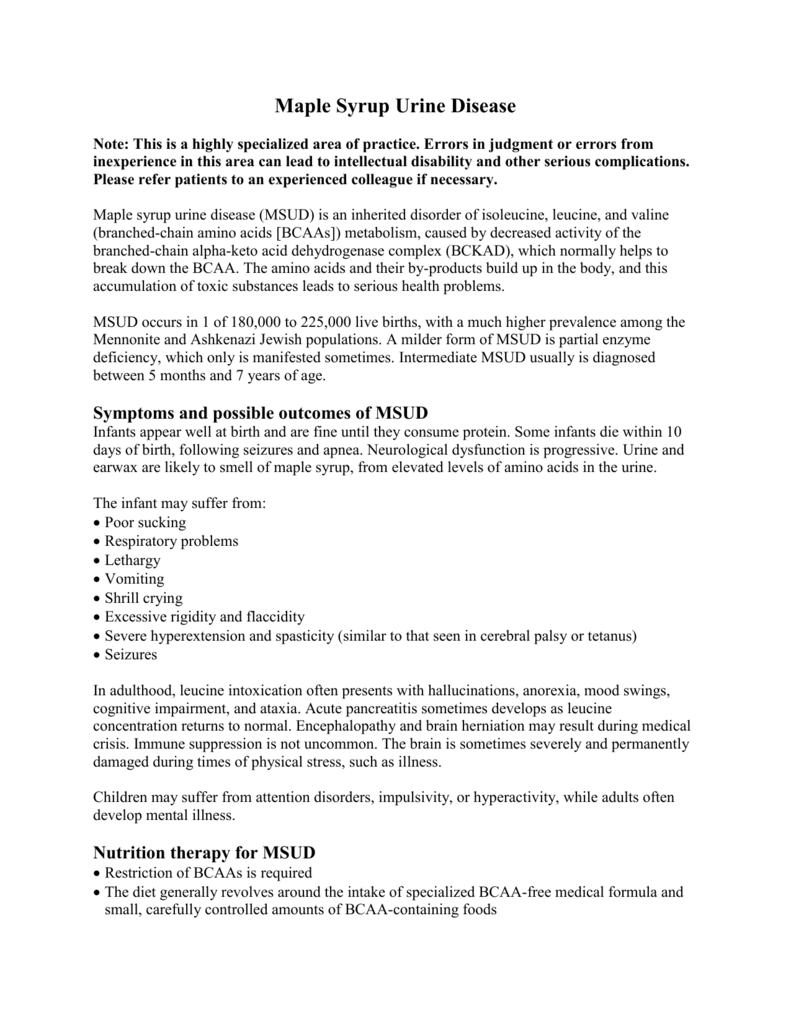
Presents with poor feeding, vomiting, poor weight gain and increasing lethargy.Symptoms otherwise develop in neonates aged 2-3 days (breast-feeding may delay onset of symptoms to the second week of life).The most common form of MSUD. Maple syrup odour in cerumen is the first clinical sign of MSUD and is present 12-24 hours after birth.įive distinct clinical variants can be distinguished, based on age of onset, severity of clinical symptoms and response to thiamine treatment: Classic MSUD Screening for MSUD is now included in the NHS newborn blood spot screening programme.

A bacterial inhibition method, thin layer chromatography and tandem mass spectrometry are all able to detect an increase in leucine, isoleucine and allo-isoleucine.

BCKAD has four subunit components (E1a, E1b, E2 and E3). Īccumulation of these three amino acids and their corresponding ketoacids leads to encephalopathy and progressive neurodegeneration in an affected patient.

These genes encode the components of the branched-chain alpha-keto acid dehydrogenase (BCKAD) complex, which catalyses the catabolism of the branched-chain amino acids (BCAAs), leucine, isoleucine and valine. Maple syrup urine disease (MSUD) is an autosomal recessive disorder which can be caused by mutation in at least three genes.


 0 kommentar(er)
0 kommentar(er)
